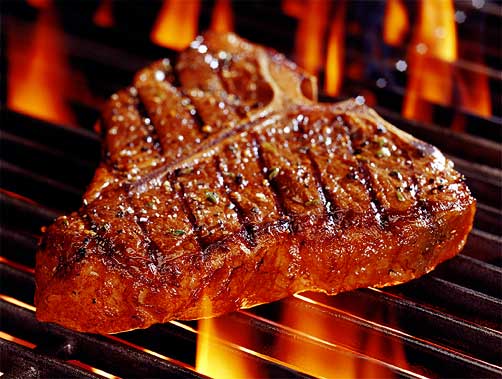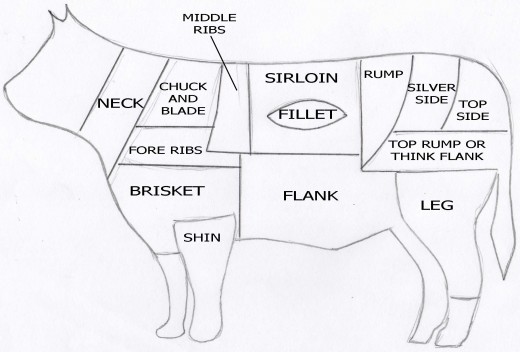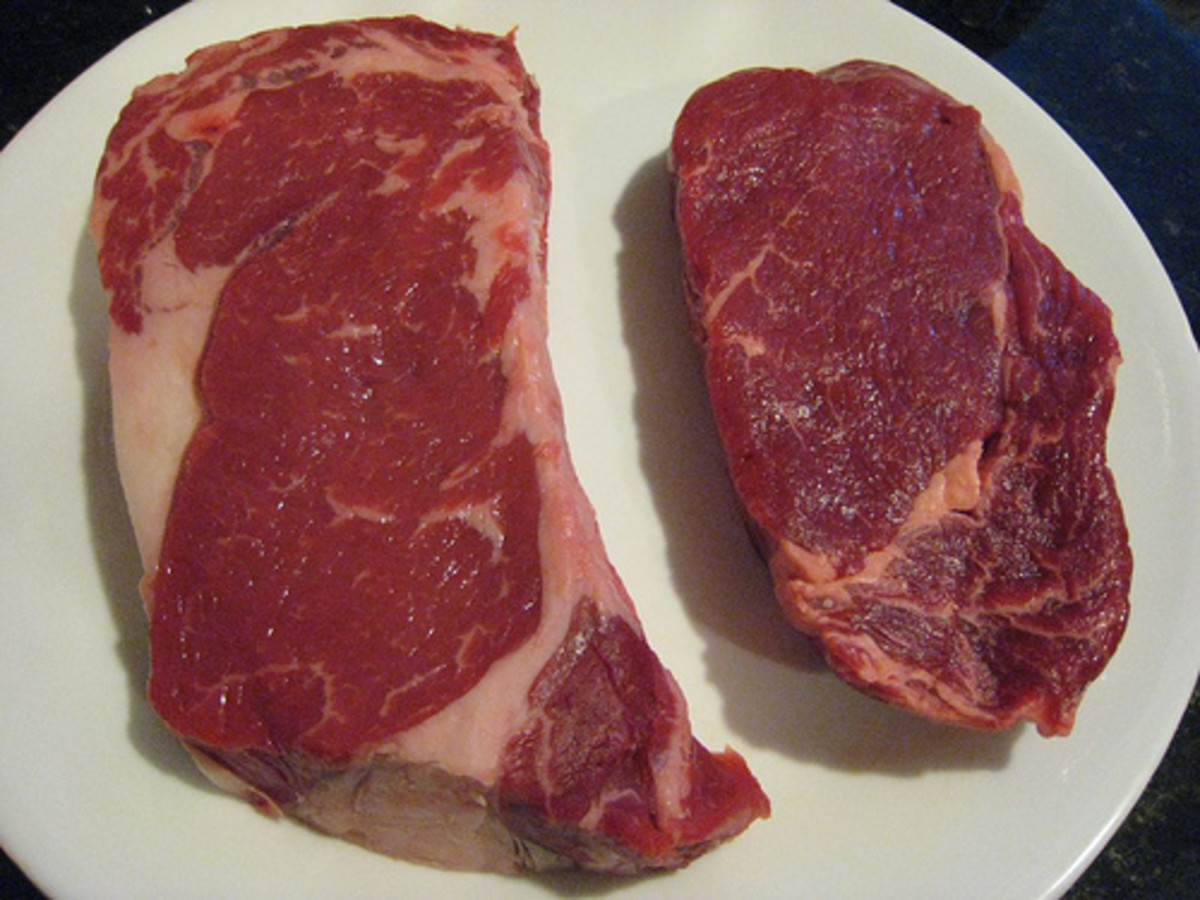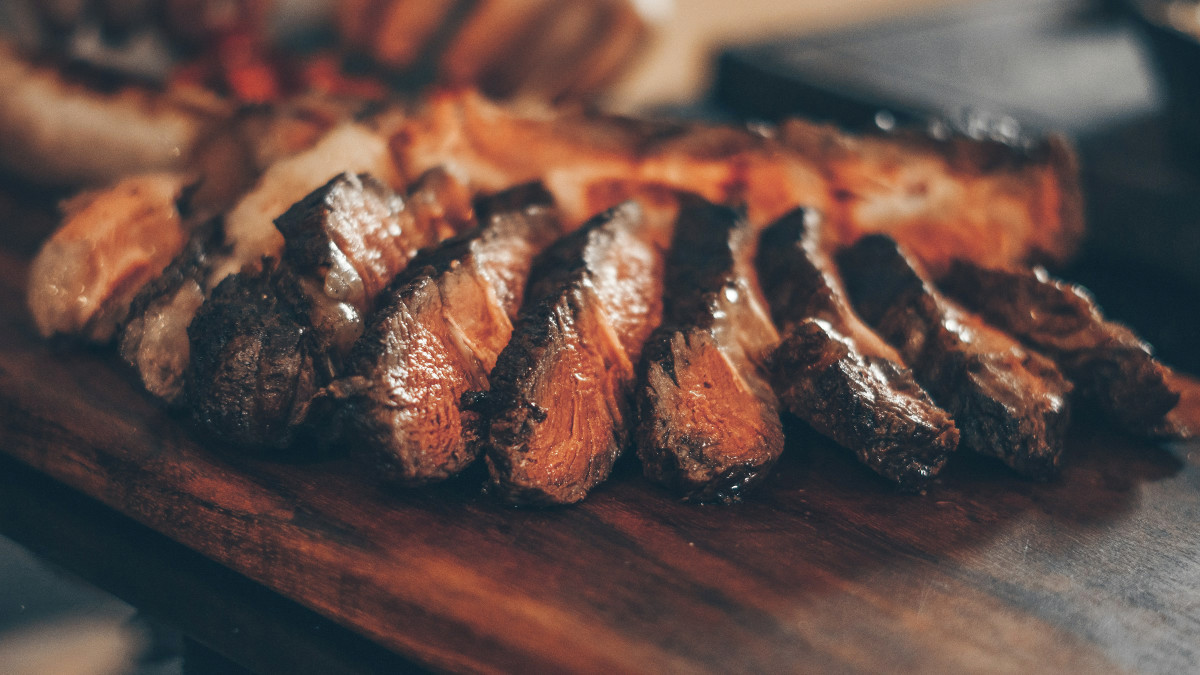- HubPages»
- Food and Cooking»
- Main Dish & Side Dish Recipes»
- Beef Recipes
Fascinating Food - Steak - All about steak

Fascinating Food – Steak – All about Steak
A Steak is a cut of meat, usually but not exclusively beef that is cut perpendicular to the muscle and usually grilled, boiled or pan-fried.
History of Steak
The story of steak started when creation began. Carnivorous dinosaurs would often prey on smaller herbivorous dinosaurs and after killing them they would enjoy a meal of their tender raw meat. It’s the ‘circle of life’. Even as wildlife evolved their needs of nourishment and taste for meat did not.
When the human being developed further and hunting became more prevalent, our ancestors would use basic weapons and tricks to catch and kill animals. They would share the cuts of meats, and other internal parts of the beasts between their communities and enjoy a great meal. Of course they eventually started to cook the meats and our tastes started to refine and evolve over the ages.
Benefits of Steak
We have to ask ourselves why? What is so special about eating ‘animal flesh’? Why eat meat over vegetables? Well there is nothing wrong with being a vegetarian, or a vegan for that matter. But meat, and especially steak gives you a lot of nutritious and lifestyle benefits that would take a wide diet of vegetables to simulate. It also tastes great!
Here are some of the benefits:
· A great source of a polyunsaturated fat. This fat helps stop the development of certain cancers.
· Four ounces of steak will supply the human body with around two thirds of the protein needed daily.
· A great source of Vitamin B.
· Steak helps strengthen bones and teeth, is good for iron deficiency and helps fight of fatigue.
· A good source of Zinc. Useful to protect blood vessel walls and strengthening the immune system and quickening wound recovery.
· A good source of Selenium, a natural antioxidant that decreases effects of arthritis and asthma.
Of course not everything is positive; here are some of the negatives:
· Steak can increase your cholesterol levels.
· If steak is not properly prepared it can spread food-borne diseases.
· Often Farmers use medicines to enhance the growth of cows. Excess Chemicals are never good for the body. Organic steak is always a safer bet.
Which Animal?
Traditionally when you order a steak you expect your cut of meat to be from Cattle. Cows and Calves are predominantly used for steak because they have a succulent juicy flavour, and they are a relatively cheap meat. Due to the milk & farming industry cattle have been involved in our diet through many an angle; whether it be the milk we drink every morning, or the butter or the cheese. Farmers try to maximise their usage of the animal as cows are one of nature’s most miraculous creatures.
There are many other species of animals where you can cut a tasty steak from. In order of flavour fullness I would propose a list being:
1) Horses
2) Moose
3) Bison
4) Elk
5) Cattle
6) Deer
7) Sheep/Lamb
8) Pig
9) Bear
10) Salmon
11) Swordfish

Which Cut?
When choosing a cut of beef for your steak you have to consider a wide variety of factors. What is your budget? How much flavour do you want in your steak? How much fat do you want?
When dealing with steaks most cuts come from the top half of the cow. On the whole any cut above the neck and tail line, is better than anything below. That’s not to mean the lower cuts aren’t great for other dishes though!
The most common types of steaks are:
1) Rib Eye Steaks: These are cut from the eye of the fore rib. They are fatty and flavourful.
2) Sirloin Steaks: These are tender, lean, boneless steaks. Quick and easy to cook.
3) T-Bone Steaks: Similar to Sirloin, just a little larger.
4) Porterhouse Steaks: These steaks are cut on the bone from the rid end of the sirloin.
5) Entrecote Steaks: A French style of steak cut from the middle of the sirloin.
6) Rump Steaks: A large long firm flavoured steak.
7) Fillet Steak: A very lean and tender steak.
8) Chateaubriand Steak: A large thick steak from the thick end of the fillet.
9) Tournedos: A Small French influenced steak from the centre of the fillet.
10) Filet Mignon: A small steak from the narrow end of the fillet
11) Frying Steaks: Thin Slices of inexpensive steak taken from the top rump.
12) Feather Steaks: Thin sliced steaks from the blade. Good for quick cooking.
How well cooked?
When enjoying a fine steak how it is cooked can turn a beautiful meal into a deal breaker. The Rarer the steak, the more juicy and flavourful it usually is (irrelevant of cut) and the more cooked a steak the more tougher it is; but the more you cook a steak, the more you remove chances of disease. It’s all about personal choice. The following list shows the terms used to refer to how long a steak is cooked:
1) Raw
2) Seared (Blue)
3) Rare
4) Medium Rare
5) Medium
6) Medium Well Done
7) Well Done
8) Overcook
The further down the list you go, you can be surer the meat is cooked through and through and there is less chance of diseases. On the other hand the closer to the top on the list, the more flavour and juice your steak will have.






